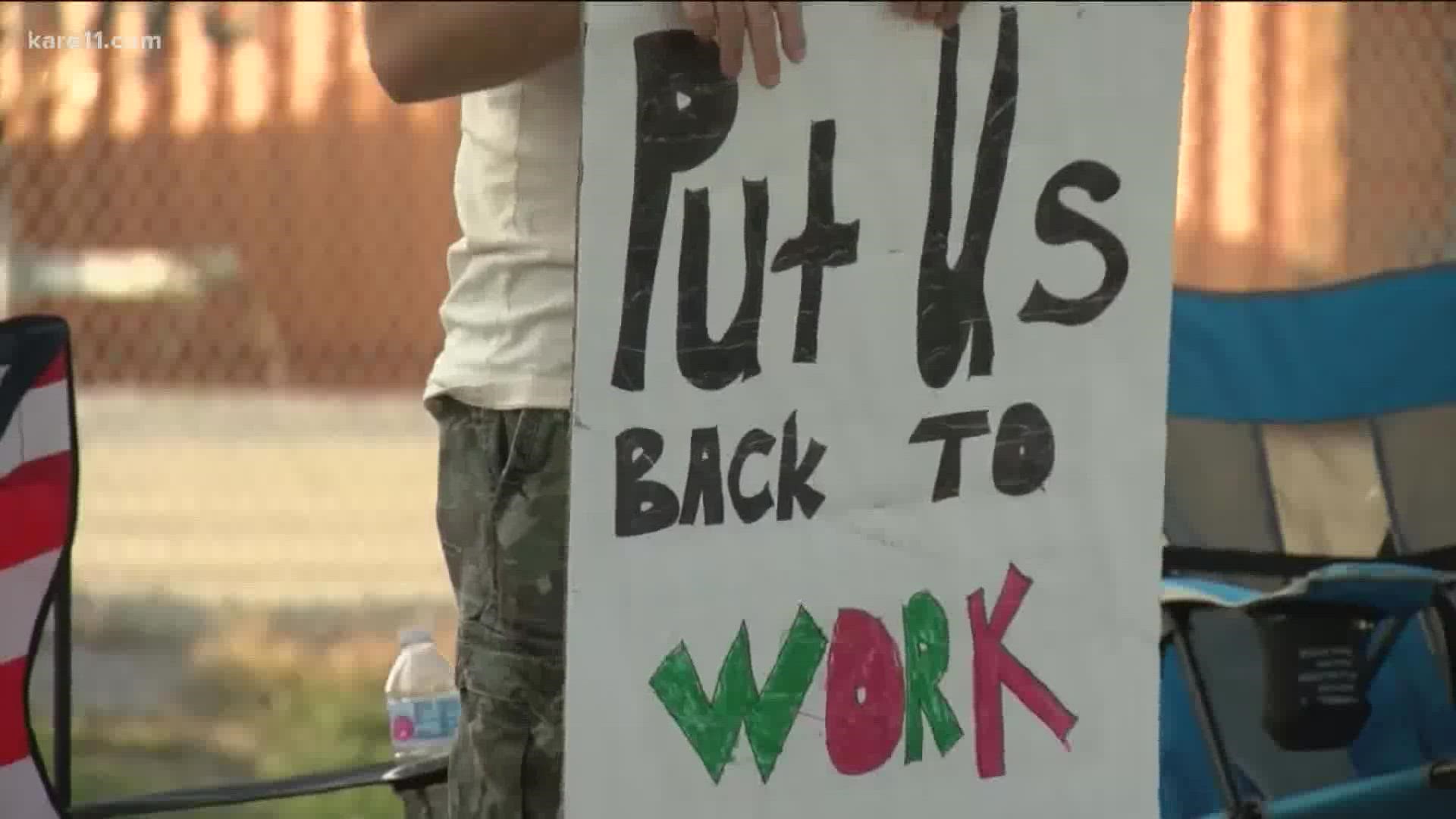PLYMOUTH, Minn. — Whether it's 50 nurses in Plymouth, or 10,000 United Auto Workers across the country, October has seen a jump in worker strikes, and experts say "Striketober" is no coincidence.
"This is really an opportune time to go on strike," said David Larson, a professor at Mitchell Hamline School of Law. "In American Labor Law, we have this rule that you can't be fired for going on strike, but you can be 'permanently replaced'. Right now, everybody knows that you not only can't find temporary workers, you can't find any permanent replacements."
According to Cornell University's Labor Action Tracker, the local nurses strike that resulted in the temporary closure of Allina's Abbott Northwestern WestHealth ER and Urgent Care, is the 176th strike in the US this year, and it's already the 17th strike in October.
"I think tracking it is very important," said Ileen DeVault, a professor of labor history for Cornell University's School of Industrial and Labor Relations.
DeVault says the school's Labor Action Tracker is important because it's not just following the large strikes happening right now at John Deere and Kellogg, but also smaller strikes like the one at Allina. The tracker also follows protests and stoppages that don't involve unions.
"There are many forms of labor action that are short of having a union," DeVault said. "It takes a long time in this country, under the National Labor Relations Act, to actually get a union to represent you in a workplace, and many workers right now are not going to wait and go through a whole long, complicated process to get the things that they feel they need."
I think tracking that activity is critical because those small actions often develop into much larger activities, and that can sometimes lead to unionization down the line."
The current reality is, in 2020, only 11% of employed Americans were part of a union.
"That's kind of the generous figure because that takes into account both the public sector and the private sector," Larson said. "If you look just at the private sector, it's 6 to 7%, which is down from about 40% after World War II."
But Larson says there is reason to believe might be on the verge of changing. A Gallup poll in August shows 68% of Americans now approve of unions, the highest mark since 1965. Approval jumps to 78% among 18- to 29-year-olds.
"I think there's a lot of frustration," Larson said. "A lot of people look at their own circumstances and say, my quality of life isn't what I wish it would be. I'd like to have better working conditions, maybe more vacation time, you know, being at home all the time I realized I actually do miss my kids, and I'm not sure I want to go back and work like I did before."

